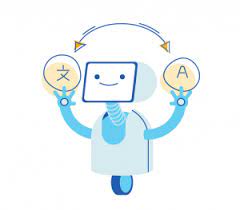
Unlocking Global Communication: The Evolution of Machine Translation
The Power of Machine Translation
Machine translation, a subfield of artificial intelligence, has revolutionised the way we communicate across languages. With the rapid advancements in technology, machine translation has become more accurate and efficient than ever before.
One of the key benefits of machine translation is its ability to break down language barriers and facilitate global communication. It allows people from different linguistic backgrounds to understand each other’s content and ideas without the need for human translators.
Machine translation systems use sophisticated algorithms and neural networks to analyse and translate text from one language to another. These systems learn from vast amounts of data to improve their accuracy and fluency over time.
While machine translation has made great strides in recent years, it is not without its challenges. Contextual nuances, cultural differences, and idiomatic expressions can still pose difficulties for machine translation systems. However, researchers continue to work on improving these systems to overcome these obstacles.
Machine translation is widely used in various industries, including e-commerce, travel, healthcare, and more. It enables businesses to reach a global audience and expand their market reach without the need for costly human translators.
In conclusion, machine translation has transformed the way we communicate across languages, making the world more interconnected than ever before. As technology continues to evolve, we can expect further advancements in machine translation that will continue to bridge linguistic divides and foster greater understanding among people worldwide.
Distinguishing Artificial Intelligence from Machine Translation
Identifying the Premier Machine Translation Solutions
An Overview of Machine Translation Concepts
5. The Pros and Cons of Utilising Machine
- What is machine translation and its types?
- What is the difference between AI and machine translation?
- What is the best machine translation?
- What is known as machine translation?
- What are the advantages and disadvantages of machine translation?
What is machine translation and its types?
Machine translation is a field of artificial intelligence that involves using computer algorithms to automatically translate text from one language to another. There are primarily two types of machine translation: rule-based machine translation and statistical machine translation. Rule-based machine translation relies on linguistic rules and dictionaries to translate text, while statistical machine translation uses statistical models that learn from large amounts of bilingual text data to generate translations. Both types have their strengths and limitations, but they play a crucial role in breaking down language barriers and facilitating cross-lingual communication in today’s globalised world.
What is the difference between AI and machine translation?
Machine translation is a specialised application of Artificial Intelligence (AI) focused on the translation of written or spoken text from one language to another. While AI encompasses a broad range of technologies that enable machines to perform tasks that typically require human intelligence, such as learning, problem-solving, and pattern recognition, machine translation zeroes in on the specific challenge of language conversion. AI provides the underlying framework and learning capabilities that power machine translation systems, allowing them to analyse linguistic data and produce translations. In essence, while all machine translation is a form of AI, not all AI is concerned with language translation; it’s a specific use case within the vast field of artificial intelligence.
What is the best machine translation?
When it comes to the question of “What is the best machine translation?”, the answer can vary depending on specific needs and preferences. Different machine translation systems excel in different areas, such as accuracy, speed, language coverage, and domain expertise. Popular machine translation tools like Google Translate, Microsoft Translator, and DeepL are often considered among the top choices for their overall performance and user-friendly interfaces. However, the best machine translation system for an individual or organisation ultimately depends on factors such as language pairs required, quality expectations, and intended use cases. It is advisable to explore and compare different options to determine the most suitable machine translation solution for your specific requirements.
What is known as machine translation?
Machine translation refers to the automated process of translating text from one language to another using artificial intelligence and computational linguistics. This technology allows for the rapid conversion of written content into different languages, facilitating cross-linguistic communication without the need for human translators. Machine translation systems employ algorithms and neural networks to analyse and interpret text, aiming to produce accurate and coherent translations that convey the original meaning of the source content. Despite its advancements, machine translation still faces challenges in capturing nuances, idiomatic expressions, and cultural subtleties accurately.
What are the advantages and disadvantages of machine translation?
When considering the advantages and disadvantages of machine translation, it is important to acknowledge the convenience and efficiency it offers in bridging language barriers. Machine translation provides quick and cost-effective solutions for translating vast amounts of text in a short period of time, making it a valuable tool for businesses and individuals seeking to communicate across different languages. However, one must also be aware of its limitations, such as potential inaccuracies in translating complex or context-specific content, as well as challenges in capturing the nuances and subtleties of language that human translators can discern. As machine translation technology continues to advance, striking a balance between its benefits and drawbacks remains crucial in maximising its utility while being mindful of its limitations.
